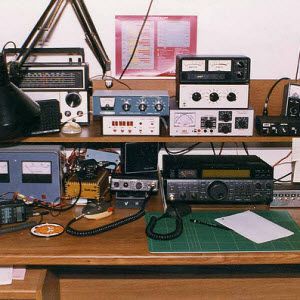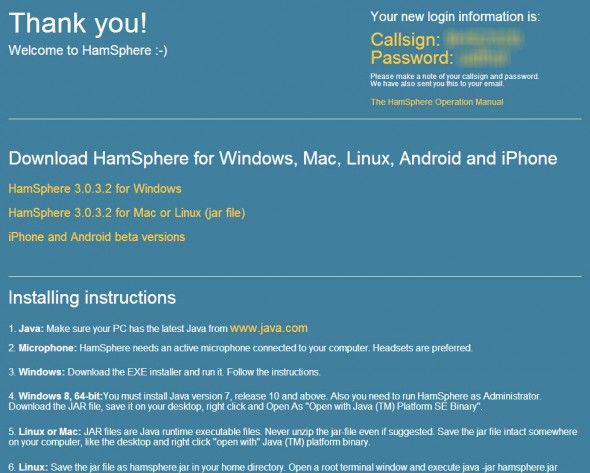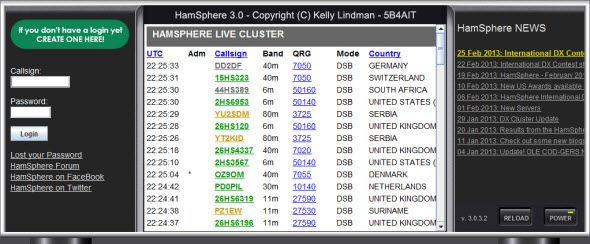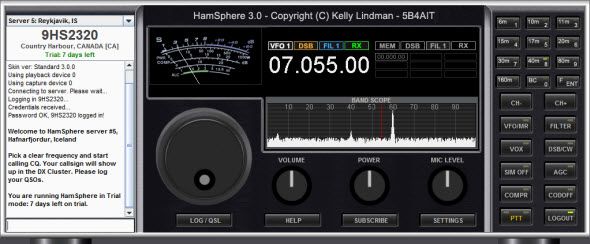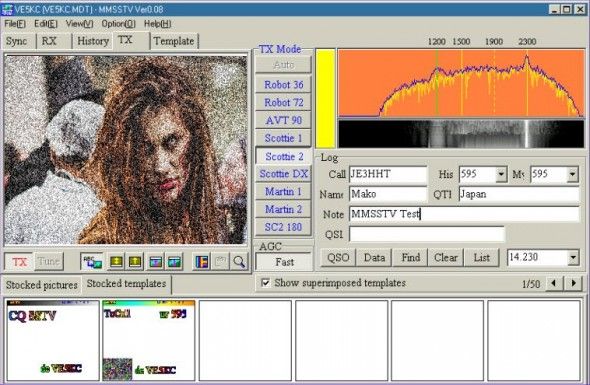HAM radio. If you even know what it is, it conjures up images of grown men hiding in dark places with glowing vacuum tubes and devices with knobs and twiddle-bits. They're talking across the world about who knows what. They're part electronics guru, part mad scientist, part excited kid. These are the guys that preceded the computer gurus of today. These are the guys that could reach across the world when no one else could.
You might suspect that the interest in HAM radio has died down, with the boon of the Internet. Perhaps you'd be right, it's hard to tell. But what you might be surprised most by is how accessible HAM radio has become because of the Internet. Unfortunately, there is no way to communicate over HAM frequencies without a HAM radio and an operator's license. That's a fair amount of time and money invested in something you might not like. But if you want to try out the HAM Experience for free, this could be for you.
MakeUseOf and I don't like to refer much to paid applications. MakeUseOf have their reasons, my reason is that I'm a cheap old man. But this virtual HAM radio application may be worth the 30 euros a year for a subscription. Especially if you consider what it would take to buy your own equipment and get licensed as a HAM operator.
That's correct - you don't have to be a licensed HAM operator to use HamSphere. That being said, read the FAQ's on how to conduct yourself on a HAM radio. The intent of not having to have a license is to help you prepare for getting a license.
Take a look at some of the features of this virtual HAM radio:
See what I mean? That's an awful lot for 30 euros a year, and there is a free trial period as well. What a great way to get your feet wet with out jumping in fully.
Upon signing up for the free trial, you'll see the following screen. This gives you a greater idea how flexible this software and service can be. Take the advice of using a headset, if you're using your desktop or laptop.
I installed the software on my desktop as well as my Android Phone. Both installations work really well, but I'll focus on the desktop application from here on. What you are actually connecting to is a purely Internet-based network that operates and sounds like HAM communications, via their 'virtual ionosphere'. That's elaborate speak for saying that the people behind Hamsphere came up with a way to add HAM-realistic noise to what amounts to a VoIP party line.
Here's the initial screen that you'll see:
Once you're logged into the virtual HAM radio, the screen mimics the basic layout of a HAM radio's hardware. I'll be honest, a lot of this is foreign to me, even though I've thought about going after my HAM license since I was a kid.
Maybe it's my military training, but I was absolutely paranoid of saying anything on the Hamsphere. See, in the military they really enforce not just chattering on the radio. I don't think I'd have anything intelligible to say to these guys.
I tuned into one signal and it was a guy from the U.S. (it was obvious by his accent, possibly Iowa) and he was walking a fellow through the process of creating a QSL card. A QSL card is a written confirmation of a communication between two amateur stations. They do these up digitally now and print them out like a postcard. Then they mail them back and forth.
http://www.youtube.com/watch?feature=player_detailpage&v=J-DXkjwRUq0
To find a station to listen to, you can watch the Band Scope in the middle of the interface. That's the thing that looks like little white spikes. By simply clicking on a higher spike, you instantly tune into a signal that usually has good chatter. This, in it self is pretty cool if you've ever had to use a crystal radio to dial in a station. You'd get it for a second and then the tuner would wander. Not with Hamsphere though. Rock solid lock on of the signal. Oftentimes you might get someone speaking another language, but that's kind of neat too.
I like the idea of having this application on my smartphone as well. I can keep it running through my wi-fi connection and listen to it like one might listen to a police scanner. Some of these conversations are very entertaining!
What's even cooler is that you can get TV (of a sort) over Hamsphere. There is free software for this as well, but it works best if you have full bandwidth mode available in Hamsphere. The technical term for this is SSTV or Slow Scan Television. This too, is a virtualization of a real-world HAM technology. This whetted my appetite for real HAM even more!
It was a bit beyond me to get it working right, but I'm going to get it figured out. If you can get a digital picture of a disaster situation across the world, it's definitely worth more than a thousand words. Here's a screenshot of what that might look like though.
With the assistance of the well-documented help files, you will be well on your way to learning how to operate a real HAM radio in no time.
If you're a HAM operator, let us know what you think of this as a training tool. If you're interested in HAM radio, do you think this virtual HAM radio is a good way to find out if you'd like it? If you're a Hamsphere subscriber, what do you like or dislike about the experience? Let us know down below!
Image Credits: Real Ham Radio Setup rtopalovich via Shutterstock, Zombie Girl grmisiti via Flickr

